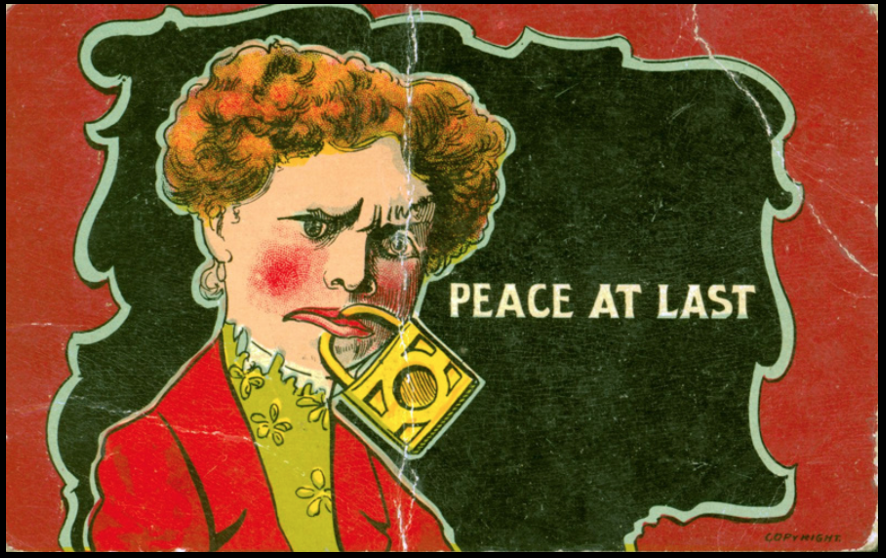by Dana Rubin
_____
At the turn of the last century, women fighting for the vote faced significant disdain and censure that took many forms, including posters, brochures, and other literature.
But one in particular — the picture postcard — reached new heights of savagery focused on the physiognomy of women’s lips and tongues, and women’s speech. These “good for a laugh” images showed women being tortured, punished and humiliated simply for the crime of speaking up.
They expressed a wish to castrate a woman by attacking her most potent weapon: her mouth.
They all express the same idea: If women would just shut up, men would finally get some peace.
Many of the images were combined with the expression “Peace at Last,” which in a different context signaled the signing of the armistice between the Allied powers and Germany at the end of World War I.
WWI had a big impact on the push for suffrage. Many thousands of women had filled in capably on the work front while the men were away fighting. Women had also joined in the war effort by working within the armed forces. When the war ended, many felt their wartime service proved their right to the vote.
Suffragists like US Representative Jeannette Rankin questioned how a country that sent its soldiers to fight for democracy abroad could defend an undemocratic electoral system at home.
I’m a longtime deltiologist — postcard collector — and I was horrified years ago when I stumbled upon this grotesque, anti-woman genre. Published in different countries around the world, they all express the same idea: If women would just shut up, men would finally get some peace.
These images are not easy to look at. But now that we’re celebrating Women’s History Month, it’s helpful to clearly see how deep-rooted is the disapproval of women speakers. Is her voice too high? Too low? Is she too masculine, or feminine? Does she smile? Does she shriek? Is she strident? Or shrill?
However we speak, our voices matter.
Please join me during Women’s History Month to celebrate women’s public speech and honor examples of women who, despite resistance, used their voices for change.

(Courtesy of the Glasgow Women’s Library. Photo: Suzanne Heffron)

(Courtesy of the Glasgow Women’s Library)












(Courtesy of the Glasgow Women’s Library)




© Copyright 2020
________________________________
Want to talk? Reach me at dana@danarubin.com

